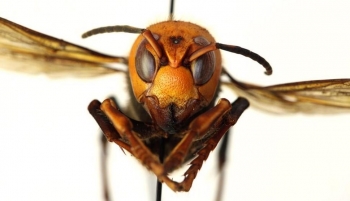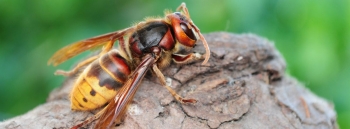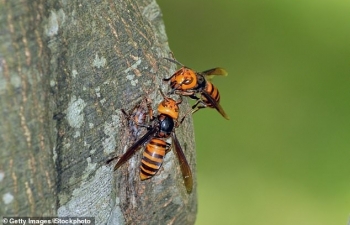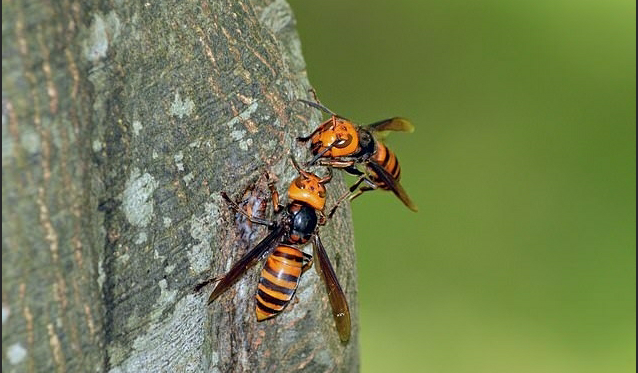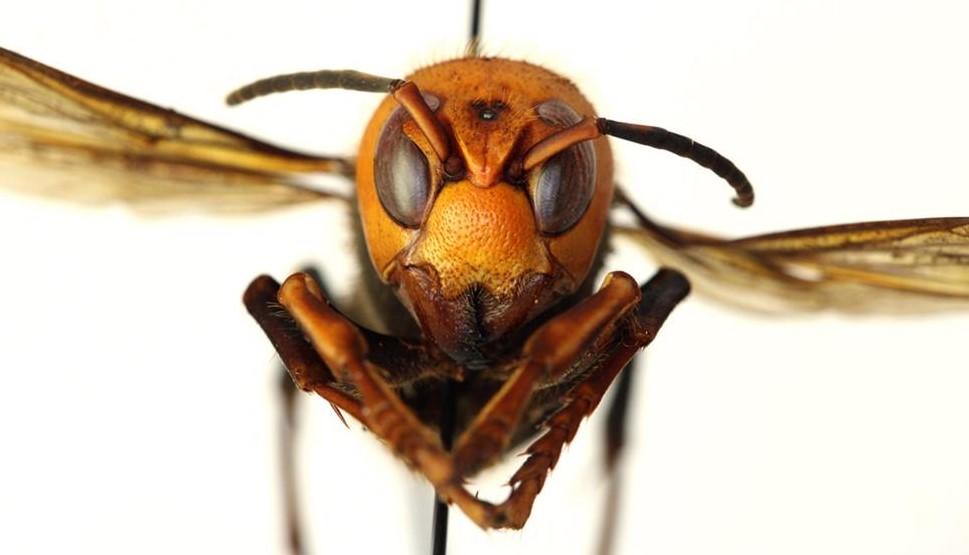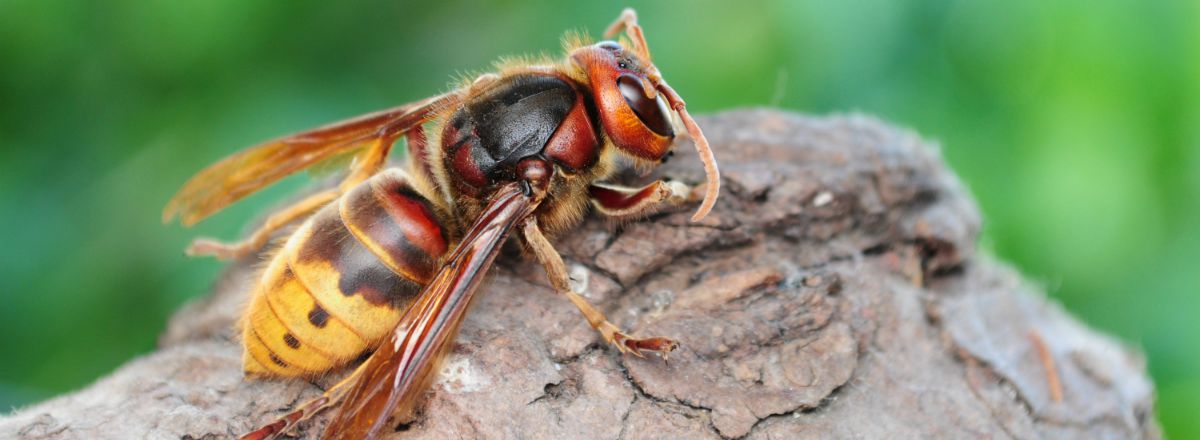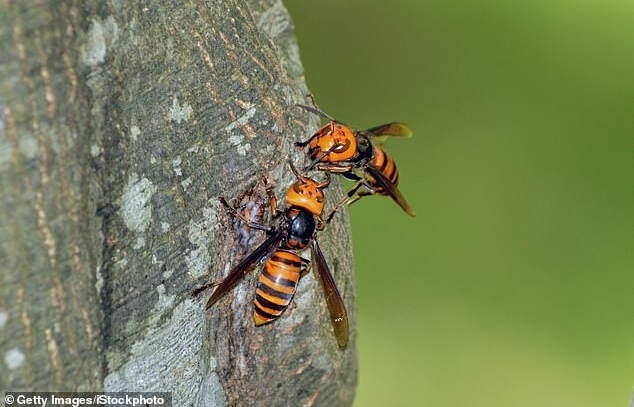13 must-know facts about ‘murder hornets’
| 'Murder hornets' - danger to the average person is low | |
| Facts about 'murder hornets' | |
| What are ‘murder hornets’? |
|
The description of the devastation these insects caused at a local beehive feels like something out of a novel: thousands of bees laying dead with their heads ripped off — a whole colony decimated. It's such a problem that the state of Washington is enlisting people to find, report on, and kill these hornets with a "sometimes lethal" sting. A dead one was first spotted in December on a beekeeper's front porch. More may be seen this spring and into the fall as the queens' hibernations ended in April. Knowledgement about murder hornets...
Below are 13 facts about murder hornets
1. What are murder hornets?
The giant hornet, or vespa mandarinia, is native to Japan. They get their ferocious name because they have the potential to annihilate honeybee populations, Today reported.
The giant insects "They're like something out of a monster cartoon with this huge yellow-orange face," said Susan Cobey, a bee breeder at the Washington State University's department of entomology.
The giant hornet was first spotted in the United States in December, according to the Washington State Department of Agriculture.
2. Murder hornets are large
Asian giant hornets are the largest species of hornet in the world. They grow to sizes of 1.5 inches to more than 2 inches, which is about the length of two quarters laying side-by-side. For comparison, the much more common European hornet is about half the size, and yellowjacket wasps are around 0.5 inches to 0.75 inches.
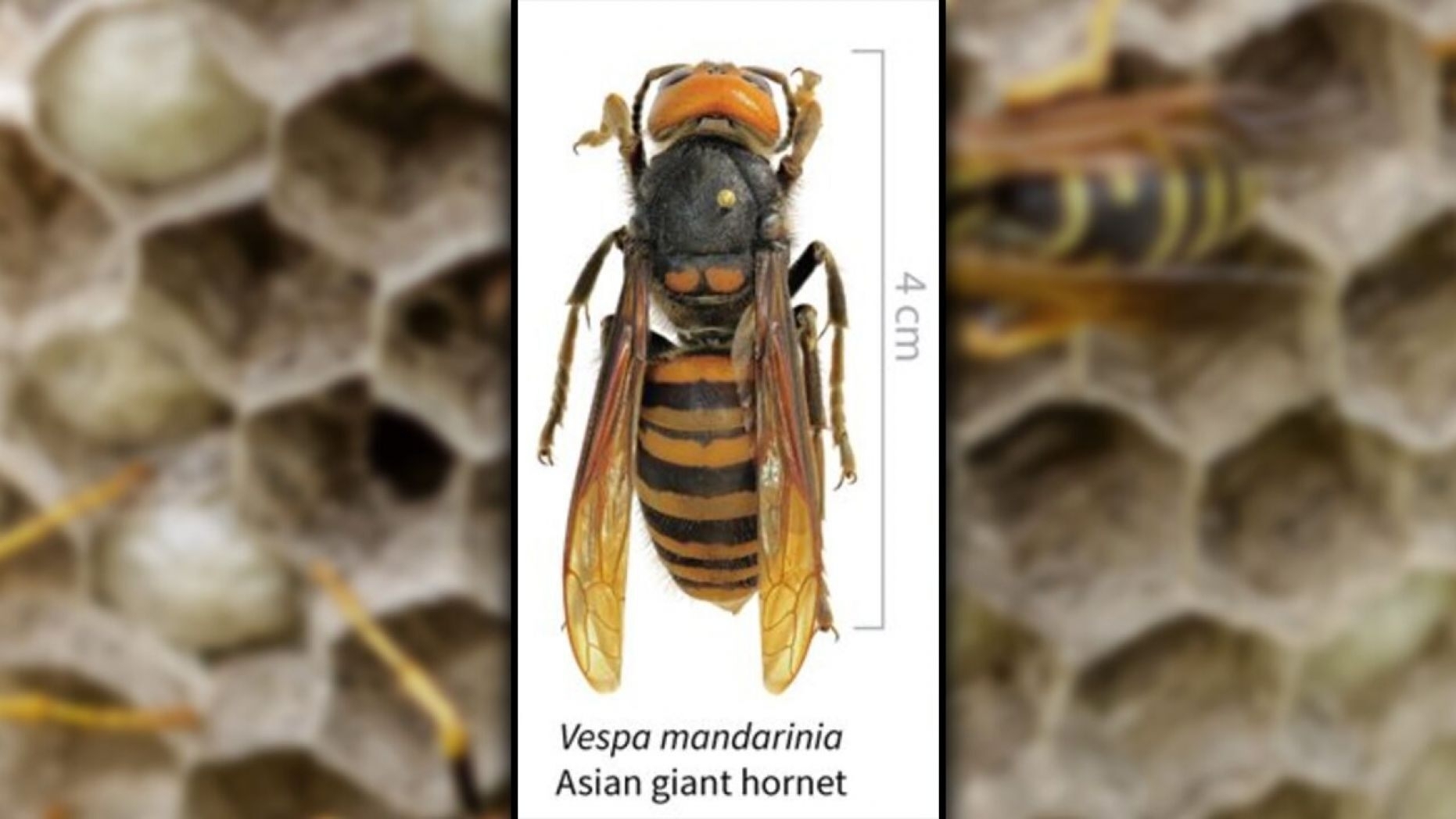 |
The invasive Asian giant hornet has been sited in Washington state for the first time in the U.S. (Washington State Department of Agriculture) |
3. Their stingers hurt. A lot.
Not only are Asian giant hornet stingers long enough to sting through normal beekeeper suits, getting stung by one of these hornets will cause excruciating pain. YouTuber Coyote Peterson subjected himself to the sting of an Asian giant hornet and described it while yelling and writhing as feeling like "absolute searing pain."
Their stingers deliver seven times the amount of venom as a honey bee. Not only that, but they can sting victims multiple times without a problem. Attacking in groups, they can kill humans, but they're mostly hunting for honeybees.
(Video: Brave Wilderness)
4. They can kill humans, but it's rare
If people are allergic to the venom of Asian giant hornets or are stung by multiple hornets, it can be fatal. About 50 people are killed by the giant hornets each year in Japan, according to the Times. The hornets are territorial and will be aggressive when something gets close to their nest but are not as aggressive far away from their homes. If you spot a murder hornet in the wild in Washington, state officials ask that you contact them rather than trying to trap the insects yourself.
(Video: Brave Wilderness)
5. Murder Hornets love bees!
Another facts about murder hornets is that bees are one of a hornet’s favorite things. Not only are they a great source of protein for their future queens, but they provide a sweet, golden, sugar goodness which hornet’s love – honey!
Nearly 5 times the size of a European honey bee, it only takes a small number of giant hornets to wipe out an entire honey bee colony. Their sheer size and power means that one giant hornet can kill roughly 40 bees a minute.
Hornets are usually gentle giants, but they can also be dangerous. In particular they can be dangerous for bees.
However, Japanese honey bees have developed a cunning tactic to stop these predators from wiping out their colony. As a hornet scout approaches the hive, the honey bees attack her before she can release any pheromones to attract her teammates. A honey bee’s sting and bite is no match for a hornet, so instead they swarm around the lonesome hornet, vibrating their bodies at a tremendous rate. The vibration from the bees causes the temperature to drastically rise, roasting the hornet alive.
 | 10 must-know facts about Kawasaki Disease Fifteen kids in New York City (U.S) have been hospitalized with symptoms consistent with Kawasaki disease, a rare condition that causes swelling in the arteries. Experts ... |
6. They kill entire bee colonies
This is the reason why these insects are referred to as murder hornets. Asian giant hornets feed themselves and their young by killing and eating other insects and regurgitating them back to their young. When Asian giant hornets find a honey bee nest, they can tear apart tens of thousands of them in mere hours with a team of just a few dozen, completely taking out a colony without a problem. This can be devastating to beekeepers and honey producers. To make matters worse, the honeybee population has been declining for years in the U.S. due to habitat loss, disease, and pesticides.
7. Murder hornets mark their targets with a scent
When scouts head out to find food sources, they secrete a special scent on honeybee hives so that their fellow hornets can find it and team up to attack. They are the only known species of wasp to apply a scent to food targets, according to the the entomology journal Psyche.
8. They start to hunt in April
Luckily, the Asian giant hornet isn't a threat all year long, another must-know facts about murder hornets. They remain relatively dormant through the winter but they do start seeking food starting in April. During the late summer and the fall is when they're at their most aggressive and are most likely to go take on honeybee colonies.
9. They prefer low, forested areas
While it's currently unclear how these Asian giant hornets came to North America, the area they've been spotted in makes sense. They prefer to live in low-altitude forests and mountains and build underground nests. You probably won't find these insects in high-altitude areas or open plains.
10. They travel far and fast
Asian giant hornets are exceptional fliers. They can reach speeds of up to 20 miles per hour and can travel several miles in a single day. Luckily they're less aggressive when they're far from home, but if they spot a honeybee colony near you, you could be in danger as they attack that area and defend it from other potential threats.
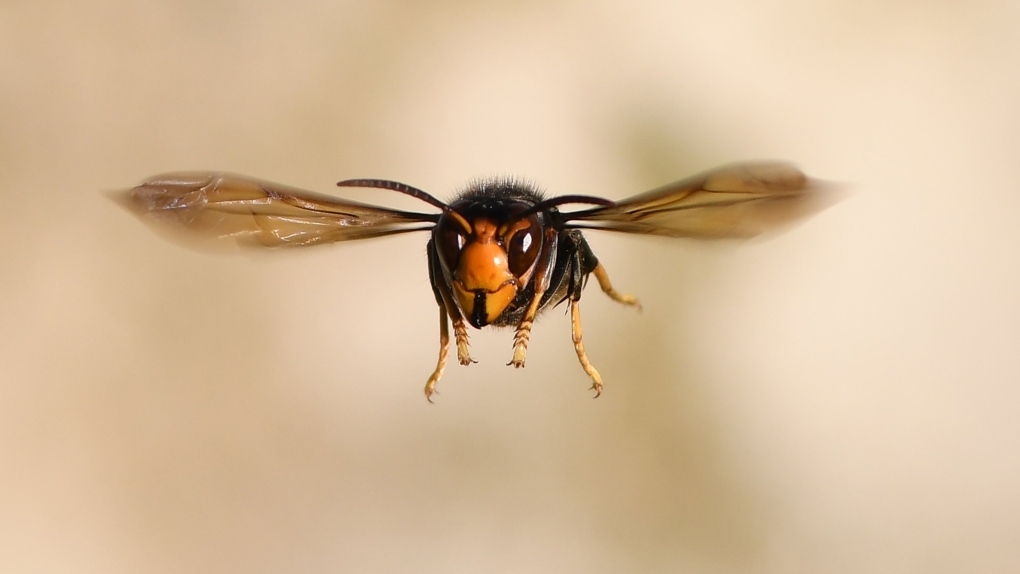 |
| Asian giant hornets are exceptional fliers (Photo: CTV News) |
11. Asian giant hornets are really bad for North America
This kind of goes without saying, but Asian giant hornets are not welcome in North America. Honeybees are vital to many facets of agriculture in North America as they help pollinate a lot of different crops including apples and various kinds of berries. Honeybees have enough trouble as it is with drastically reducing population numbers, the Asian giant hornet could have long-lasting effects if it's not eradicated quickly.
12. They're not invincible
Don't worry, it's possible to get rid of murder hornets. There are numerous methods of getting rid of Asian giant hornets through the use of poison, controlled fires, baited traps, and screens. Not only can humans do a lot to get rid of these pests, sometimes honeybees can outnumber these giant killers. A bunch of honeybees will completely cover the murder hornets and kill them by increasing the heat within the tangle of bodies and exerting carbon dioxide, according to Mashable.
13. What else can we do to stop the invasion?
Chris Looney, an entomologist said the key to stopping the invasion is finding and destroying murder hornet nests before they can reproduce, according to Today.
He also urged people to report nest sightings to local authorities and to avoid trying to kill the hornets themselves.
"Don't try to take them out yourself if you see them," he said. "If you get into them, run away, then call us! It is really important for us to know of every sighting, if we're going to have any hope of eradication."
| Asian murder Hornet sightings can be reported to the Washington State Department of Agriculture Pest Program at 1-800-443-6684, pestprogram@agr.wa.gov or online at agr.wa.gov/hornets |
 | German Junge Welt daily hails Vietnam’s spirit of peace and national independence Germany's Junge Welt (Young People) daily on May 2 ran an article highlighting Vietnam’s spirit of peace and national independence during the war, describing this as a decisive ... |
 | Coronavirus vaccine: Vietnam waiting results from animal tests as one more case recorded An experimental vaccine for coronavirus (COVID-19), jointly produced by a group of scientists from Vietnam and Britain has been tested in mice, and scientists are ... |
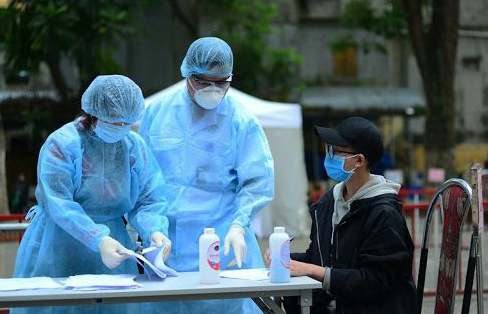 | Coronavirus update: British oil expert is Vietnam’s latest COVID-19 sufferer The British national tested positive for nCoV Sunday afternoon, bringing Vietnam’s cumulative and active cases to 271 and 54 respectively, the Health Ministry confirmed. |
Recommended
 World
World
Pakistan NCRC report explores emerging child rights issues
 World
World
"India has right to defend herself against terror," says German Foreign Minister, endorses Op Sindoor
 World
World
‘We stand with India’: Japan, UAE back New Delhi over its global outreach against terror
 World
World
'Action Was Entirely Justifiable': Former US NSA John Bolton Backs India's Right After Pahalgam Attack
Popular article
 World
World
US, China Conclude Trade Talks with Positive Outcome
 World
World
Nifty, Sensex jumped more than 2% in opening as India-Pakistan tensions ease
 World
World
Easing of US-China Tariffs: Markets React Positively, Experts Remain Cautious
 World
World

